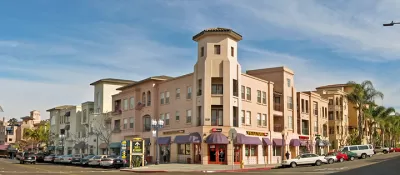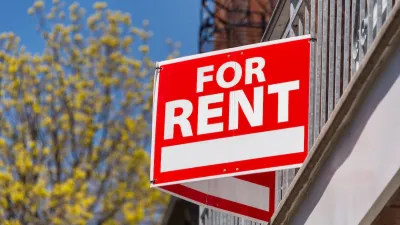San Diego is one of the most expensive housing markets in the country and has the fourth highest homeless population. Planning activist Murtaza Baxamusa identifies four needed measures.

One of the strongest tools to make housing more affordable in California is inclusionary housing policies and ordinances. Inclusionary housing laws require developments, as a condition of permitting, to contain a certain quantity of affordable units. HUD, state, and local regulations define "affordable." Explains planning activist Murtaza Baxamusa:
Since inclusionary zoning programs do not require direct subsidy dollars to create affordable homes and rentals, they are a market-based solution for affordable housing, according to Fannie Mae [pdf]. Inclusionary zoning ordinances are most effective in strong markets with optimum development incentives, and they are able to produce affordable housing that would not otherwise be built, according to the Urban Land Institute. Over 170 thousand affordable apartments and homes have been created through inclusionary programs nationally, according to an estimate by the Lincoln Institute of Land Policy [pdf].
Inclusionary housing ordinances, and particularly the principle behind them, have been upheld by the California Supreme Court. Additionally, a recent state law makes rental housing subject to inclusionary housing ordinances. However, some cities, like San Diego, have under-performing inclusionary housing ordinances. Baxamusa identifies four fixes to make inclusionary housing ordinances work. Please see the source article for more details.
FULL STORY: How to make housing more affordable in San Diego

Planetizen Federal Action Tracker
A weekly monitor of how Trump’s orders and actions are impacting planners and planning in America.

San Francisco's School District Spent $105M To Build Affordable Housing for Teachers — And That's Just the Beginning
SFUSD joins a growing list of school districts using their land holdings to address housing affordability challenges faced by their own employees.

The Tiny, Adorable $7,000 Car Turning Japan Onto EVs
The single seat Mibot charges from a regular plug as quickly as an iPad, and is about half the price of an average EV.

Seattle's Plan for Adopting Driverless Cars
Equity, safety, accessibility and affordability are front of mind as the city prepares for robotaxis and other autonomous vehicles.

As Trump Phases Out FEMA, Is It Time to Flee the Floodplains?
With less federal funding available for disaster relief efforts, the need to relocate at-risk communities is more urgent than ever.

With Protected Lanes, 460% More People Commute by Bike
For those needing more ammo, more data proving what we already knew is here.
Urban Design for Planners 1: Software Tools
This six-course series explores essential urban design concepts using open source software and equips planners with the tools they need to participate fully in the urban design process.
Planning for Universal Design
Learn the tools for implementing Universal Design in planning regulations.
Smith Gee Studio
City of Charlotte
City of Camden Redevelopment Agency
City of Astoria
Transportation Research & Education Center (TREC) at Portland State University
US High Speed Rail Association
City of Camden Redevelopment Agency
Municipality of Princeton (NJ)




























